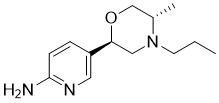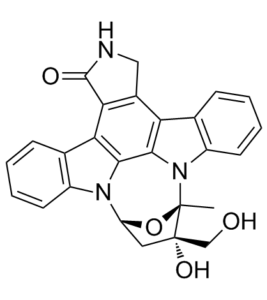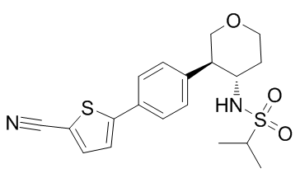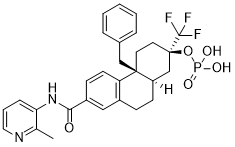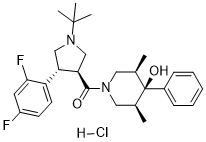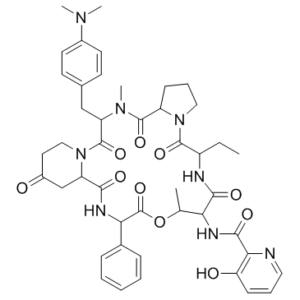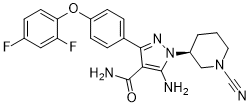PF-592379 (PF592379) is a novel, potent and selective agonist of dopamine D3 receptor agonist (EC50 = 21 nM) with the potential for the treatment of male erectile dysfunction and female sexual dysfunction. opamine receptor antagonism is a compelling molecular target for the treatment of a range of psychiatric disorders, including substance use disorders. In vivo, […]
Lestaurtinib (CEP-701; KT-5555; SP-924) is a novel, orally bioavailable and potent multi-kinase inhibitor with anticancer and anti-inflammatory activity. It acts by inhibiting Trk family of receptor tyrosine kinases with IC50s of 0.9, 3 and less than 25 nM for JAK2, FLT3 and TrkA, respectively. Lestaurtinib inhibits autophosphorylation of FMS-like tyrosine kinase 3 (FLT3), resulting in […]
PF-4778574 is a novel and potent positive allosteric modulation (PAM) of AMPA receptor with EC50 of 45 to 919 nM in differenct cells. Working memory impairments are a core aspect of schizophrenia, yet current medicines do not address such cognitive dysfunction. Positive modulation of AMPA receptors with LY451646 (0.1-1.0mg/kg, SC) and structurally distinct PF-4778574 (0.01mg/kg, […]
Sarolaner (also known as PF-6450567; PF6450567) is a novel, potent, orally bioactive and broad-spectrum ectoparasiticide (an antiparasitic agent for veterinary use). It has efficacy against fleas and ticks on dogs with LC80 of 0.3 μg/mL against C. felis and an LC100 of 0.003 μg/mL against O. turicata.
Fosdagrocorat (formerly known as PF-04171327) is a phosphate ester prodrug of PF-00251802 (dagrocorat), a selective high-affinity partial agonist of the glucocorticoid receptor, which is further metabolized to PF-04015475. Dagrocorat (also known as PF-00251802) is a novel and potent dissociated glucocorticoid receptor agonist with the potential usefulness as an anti-inflammatory agent. The dissociated agonists of the […]
PF-00446687 is a novel, potent, highly selective, brain penetrant small-molecule MC4R (melanocortin-4 receptor) agonist with EC50 of 12 ± 1 nM. The role of the MC4 receptor subtype has received particular scrutiny, but the sufficiency of its selective activation in potentiating sexual response has remained uncertain owing to conflicting data from studies in preclinical species. We describe […]
Seco Rapamycin sodium (Secorapamycin A monosodium), the sodium salt of the ring-opened product of Rapamycin, is reported not to affect the mTOR function. Rapamycin (also known as Sirolimus), a natural macrocyclic lactone isolated from the bacterium Streptomyces hygroscopicus, is a specific and potent mTOR inhibitor with IC50 of ~0.1 nM in HEK293 cells. Rapamycin was […]
Sinogliatin (formerly HMS-5552; RO-5305552) is a a first-in-class glucokinase activator with the potential for the treatment of type 2 diabetes.
Pristinamycin IA (also known as Mikamycin B; Mikamycin IA), a naturally occuring and biologically active decapeptide isolated from the skin of the Australian frog Hyla caerulea, is a novel and potent cholecystokinetic agent which acts as a cholecystokinin receptor agonist.
PF-06250112 is a novel, potent, highly selective, orally bioavailable BTK inhibitor with an IC50 of 0.5 nM, shows inhibitory effect toward BMX nonreceptor tyrosine kinase and TEC with IC50s of 0.9 nM and 1.2 nM, respectively. PF-06250112 inhibits both BCR-mediated signaling and proliferation, as well as FcR-mediated activation. To assess the therapeutic impact of BTK […]
